Ryobi RPW120B High Pressure Cleaner review: a compact budget-friendly washer
Looking for a powerful pressure washer that isn’t going to take break the bank? We tested the Ryobi RPW120B High Pressure Cleaner to see how it coped with garden and household jobs
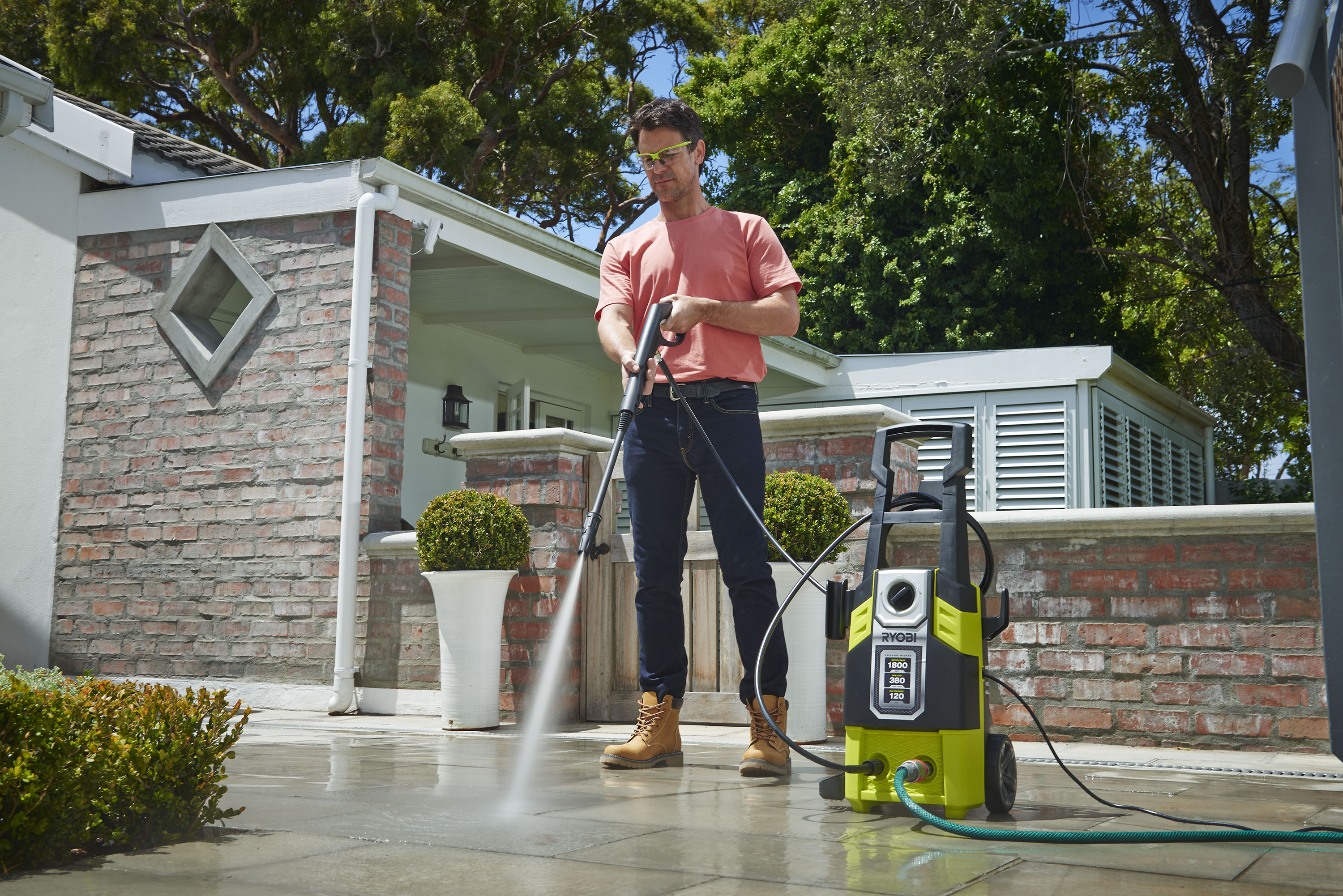

A powerful and affordable piece of kit for those needing a pressure washer for a smaller budget. It lacks the oomph for big areas but with a compact design, it is very well suited to small gardens with limited storage space.
-
+
Good value for money
-
+
Easy to assemble and use
-
+
Lightweight and compact
-
-
Noisy
-
-
Some parts are a bit flimsy
-
-
Large areas take a good deal of time
Why you can trust Gardeningetc

The Ryobi RPW120B High Pressure Cleaner is designed to clean vehicles, floors, facades and a number of other surfaces, removing stubborn dirt, with or without detergent. Featuring a powerful 1800W motor, onboard storage, spray nozzle wand and on-demand detergent option, its compact design makes it easy to transport and store away.
I have used several of the best pressure washers before, but never any tools from Ryobi and with a very reasonable price tag attached of just over £100, I was interested to see how this pressure washer compared against similar machines and those of a higher budget.
I tested it over summer putting it up against a dirty car, paving, windows and many more items around my garden.
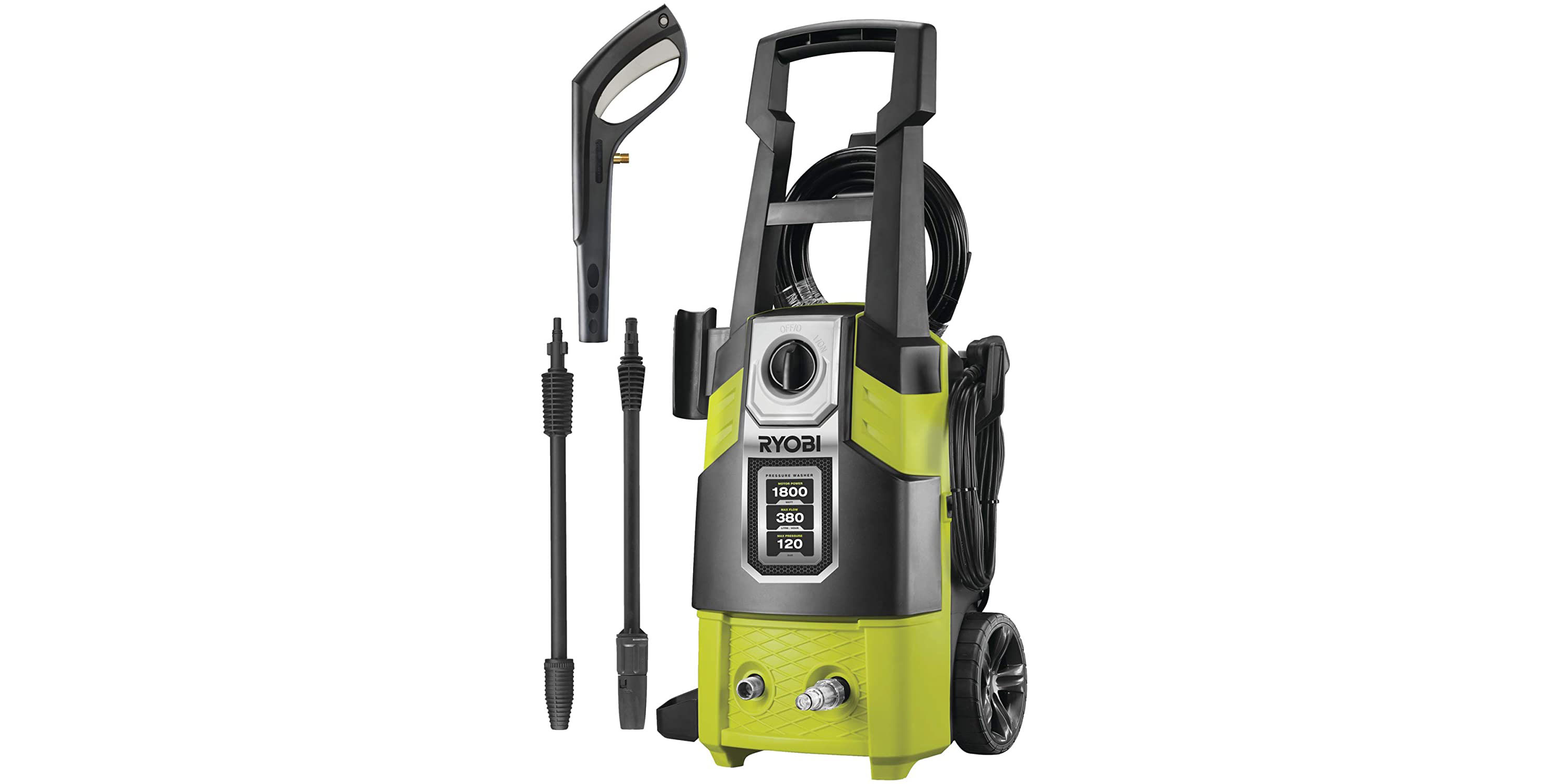
Ryobi RPW120B High Pressure Cleaner specifications:
- Power type: 220–240V Mains
- Power: 1800W
- Max pressure: 120 bar
- Best for: small areas with stubborn dirt
- Hose length: 5m
- Weight: 10.13kg
First impressions of the Ryobi RPW120B Pressure Washer
The first thing I noticed was how light the box was, compared with the other pressure washers I’ve used. Upon opening the box, I was met with 10 unassembled parts, neatly packaged together. I was also pleasantly surprised (and relieved), to find that there was only one booklet with this pressure cleaner. In the past, I’ve had tools which come with four or five different bits of paper and I always think they should be more concise.
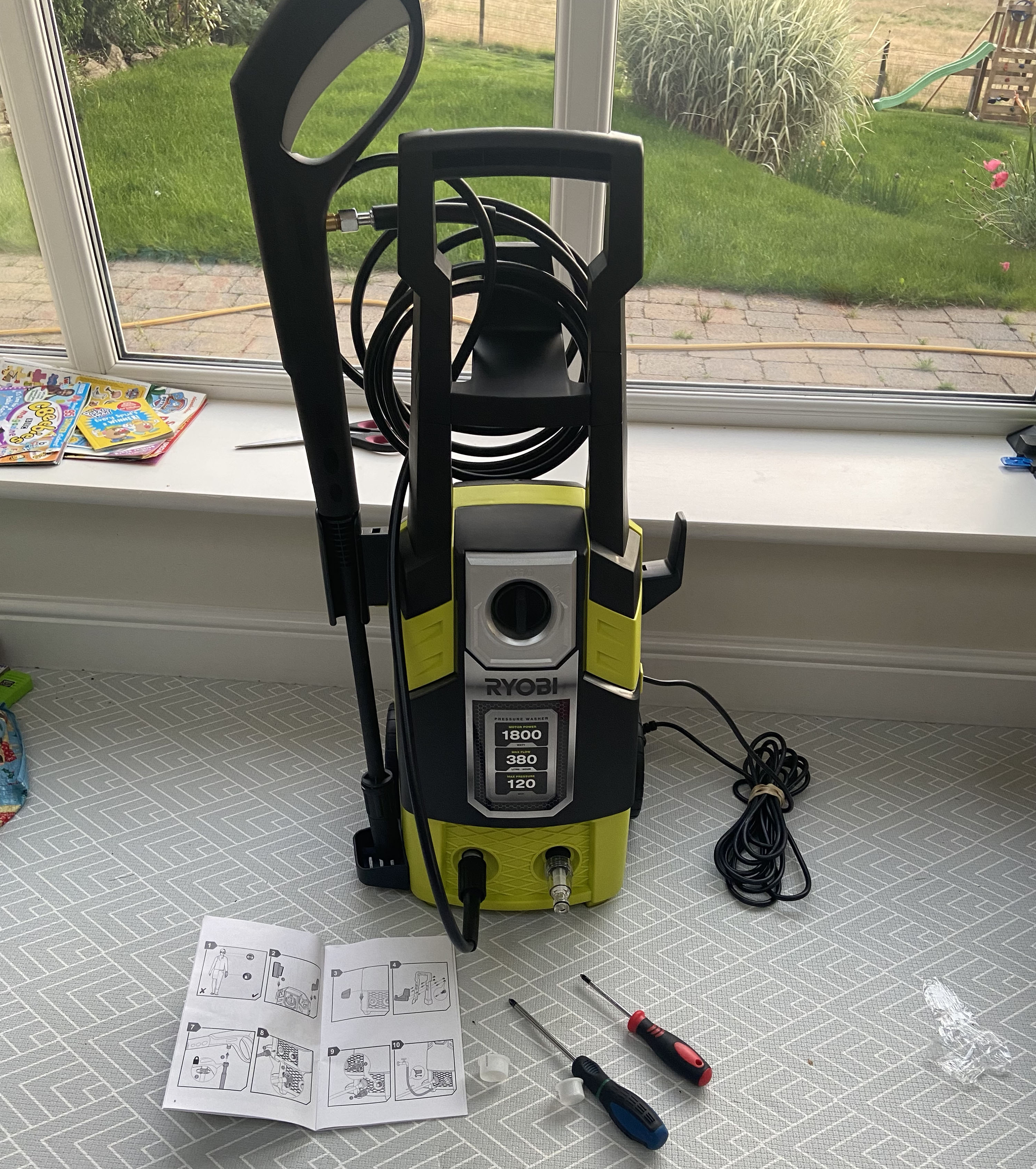
It took just 10 minutes to assemble the Ryobi RPW120B pressure washer
Getting started
I started by looking through the instruction manual (only 20 pages long) and noted that the assembly instructions were in the form of just illustrations. Once I had unwrapped all the parts from their cellophane, I started to put the machine together, seeing that I would need a cross-head screwdriver (no size provided). Assembly was really simple and involved pushing most of the parts onto the corresponding slots on the main body of the pressure cleaner.
You attach the power cord holder and trigger handle holder first, by sliding them into place. You then attach the handle and hose handle together using four screws. Following that you push the handle onto the main body and insert two screws to secure it in place. This is the only hiccup I had with assembly, as I needed to get a longer screwdriver to reach the screws inside, plus the illustration is a bit unclear about which holes you have to insert the screws into. There are arrows pointing to two holes on the machine itself, but the illustrations make it seem as if one screw goes into the hole next to the marked one. I ended up having to use the light on my phone to look into the holes, to see which were vacant.
Once I’d attached the handle, I fit the spray wand to the trigger by simply twisting it together, then attached the high pressure hose to the fitting on the trigger and the other end to the main machine. I then screwed the water inlet filter on to the machine, ready for the garden hose to be attached. Assembly complete, I was pleased to see that it had only taken me ten minutes (two of which were looking for a longer screwdriver).
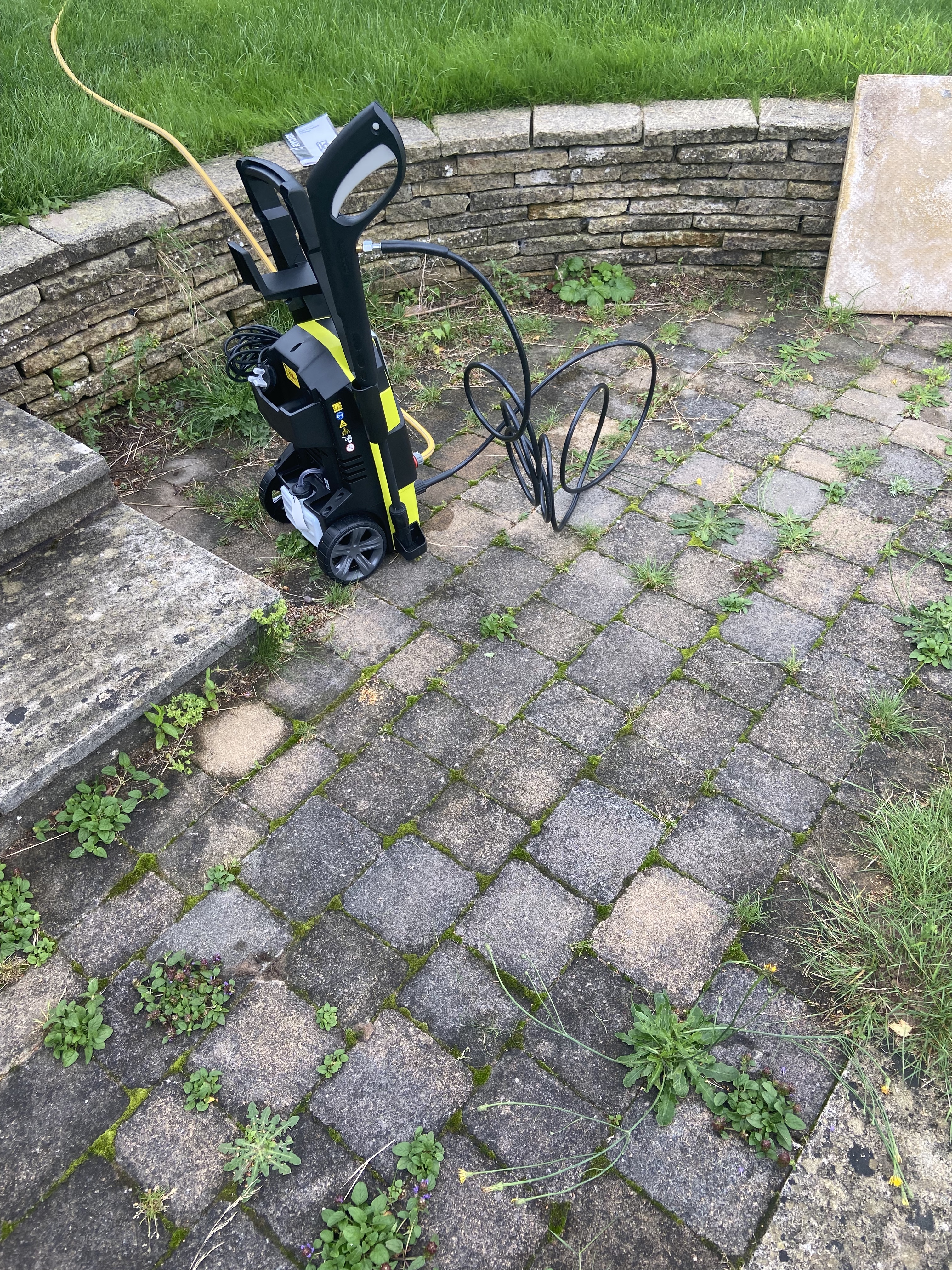
The Ryobi RPW120B High Pressure Cleaner had a big task ahead cleaning the dirty (and weed covered) paving and steps in my garden
What is the Ryobi RPW120B High Pressure Cleaner like to use?
Once the machine is assembled, it’s just a matter of wheeling it out, attaching the hose and plugging it in. It comes on wheels and has a handle to easily transport it from shed to garden. It’s also very light, so can be carried down steps with no problems.
Once you’re in the area you want to work in, you simply slot your garden hose onto the water outlet port and turn the hose on. Next you expel any air that’s in the pipes by operating the lance without the power on. To operate the lance, you press the trigger handle lock, followed by squeezing the trigger. After about 30 seconds, water should be coming through consistently.
To start pressure washing, you slide the power switch on the main machine to ‘on’ and then squeeze the trigger. The instruction manual doesn’t offer any advice on how to clean different surfaces, but shows you by means of illustrations, how to operate the machine effectively. You control both the power of the jet and the width of the spray by twisting the relevant parts of the lance. Read our advice on how to use a pressure washer for more tips on getting started.

The Ryobi RPW120B pressure washer was good at giving an overall clean but needed to be on the highest (and narrowest) setting for blasting off lichen and hard staining. This works well but takes a lot of time for a larger area
Stone floor areas
Our garden has quite a large patio, made up of slabs, stones and block paving. I had used our Karcher pressure washer a few months ago on the top level, but hadn’t got round to finishing the middle and lower sections. The pale slabs that make up the steps were covered in moss and black spots, plus there were weeds and grass growing in between. Our Karcher pressure washer came with a tool especially for patios and removed weeds, dirt and black spots quickly and easily. I was interested to see how the Ryobi lance would compare.
I started by setting the spray width to wide by twisting the very end of the lance in an anti-clockwise direction. I then set the pressure to medium, by twisting the section above until it was midway. I used the lance in a sweeping motion to remove loose dirt and debris. Next, I set the pressure at the highest level to start cleaning the block patio. Straight away I could see the stone changing colour, although I found that I had to hold the end of the lance quite close to the surface, to remove dirt effectively. To remove the moss, I changed the spray width to make it as narrow as it could go, which lifted the moss straight away. However, I found the lance wasn’t powerful enough to remove the grass and weeds from between the blocks.

The narrow spray is very effective at removing dirt in small areas
Once I had finished the block paving, I moved on to the slabs, using high pressure and the wide spray. It was very aesthetically pleasing being able to see where I had and hadn’t cleaned. I switched to the narrow spray to remove the black spots of lichen, as the wide spray didn’t have any effect. This removed them perfectly, but I also found that it cut through more dirt which the wide spray hadn’t lifted, meaning I was left with a squiggly pattern from using the narrow nozzle.
I continued to do the block paving and steps, following my previous methods and then left it to dry to see the results. Overall, it took me about an hour and a half to do a fairly small section of my patio. Although the results were visible, compared to the top patio (which I’d used my Karcher pressure washer on), it wasn’t as clean and all the weeds and grass had stubbornly stayed put.
It’s important to note that you can purchase a surface cleaner tool for the Ryobi RPW120B pressure washer, especially for stone floor areas. It looks similar to the Karcher one, so I would hope that this would help cut the time it takes to clean the patio and would be more effective. You can also purchase detergent to help lift dirt on stone floor areas, so with the Ryobi’s in-built detergent dispenser, this may also assist in getting better results.
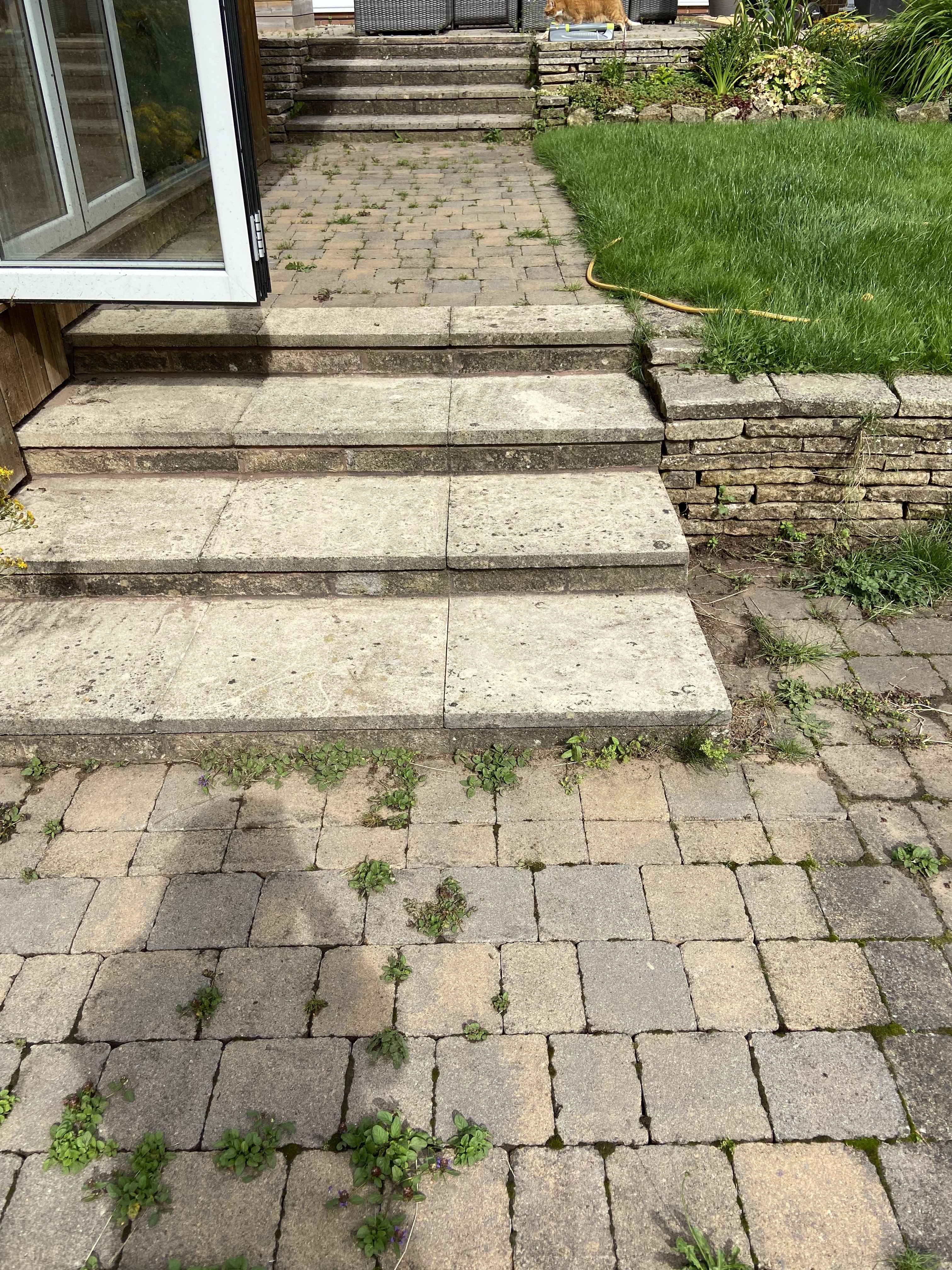
The Ryobi RPW120B high pressure cleaner did a great cleaning job, but didn't get the weeds like my Karcher K7 Premium Smart Control Pressure Washer can
Cleaning Glass
The section of patio I cleaned is next to our garden office, which I now found covered in dirt that had been disturbed by the pressure washer. As I have used a few pressure washers before, sometimes the instructions recommend using lower pressure to clean glass. I switched the pressure to medium and used the lance to clean all the debris from the glass and surround of the bi-fold doors, which was quick and easy. I also used this setting to clean the timber, which was very effective – a little too effective as it started to strip the wood stain. I stopped to prevent creating a new job for myself, but it did show that you could use the pressure washer for cleaning wooden decking.
Cleaning the car
I very rarely clean my car, my excuse being it’s difficult to find the time with two children under the age of five. Plus, it’s gun-metal grey, so doesn’t show up the dirt too badly. However, it was in need of a good clean, especially as some passing birds had used it as a toilet, so this offered the perfect opportunity to test the Ryobi RPW120B High Pressure Cleaner on its effectiveness of car cleaning.
Although the instruction book offers little advice on how to use the pressure washer for cleaning different surfaces, it does point out in the safety warnings to not use the high-pressure jet on the tyres and to keep a distance of 30cm. With this in mind, I set the nozzle to wide and with medium pressure, rinsed my car from top to bottom.
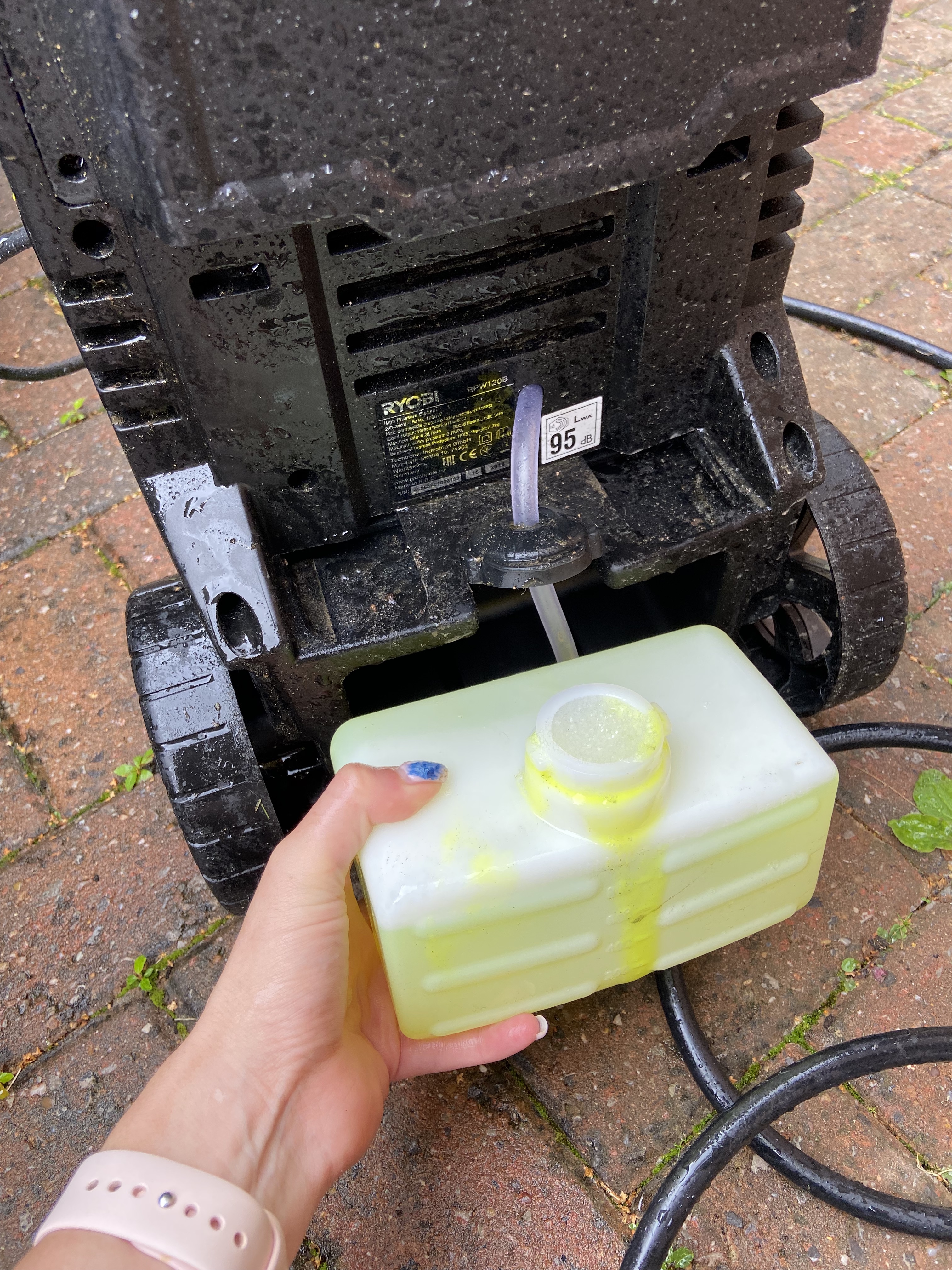
Adding detergent helps lift dirt more easily
I then got to test the automatic detergent function, as we had a bottle of car shampoo. Following the ratios on the shampoo instructions, I removed the soap dispenser, filled it with water and shampoo, then fitted it back into place on the machine. I then turned the water jet pressure to the lowest setting and squeezed the trigger. This dispenses suds, which I sprayed all over my car and then left a minute or two to settle. I then used a sponge to work in the detergent. Without having to remove the soap dispenser, I then turned the pressure back to medium and rinsed the car all over, using slightly higher pressure on tougher spots around the front grill. It took about 20 minutes in total to clean my car (a mid-size SUV).
After leaving my car to dry, I went out to inspect the results. It was noticeably cleaner and had left the windows and bonnet gleaming. However, I did find that there was still a dirty residue on some parts of my car and it hadn’t removed some of the stubborn dirt on the number plate and metal work. The bird poo had disappeared though and for a 20-minute job, I was pleased with the results.
You can purchase a wash brush which is used for the effective cleaning of cars, bikes and other vehicles. This might help lift the dirt more effectively and you can use it to distribute detergent too.
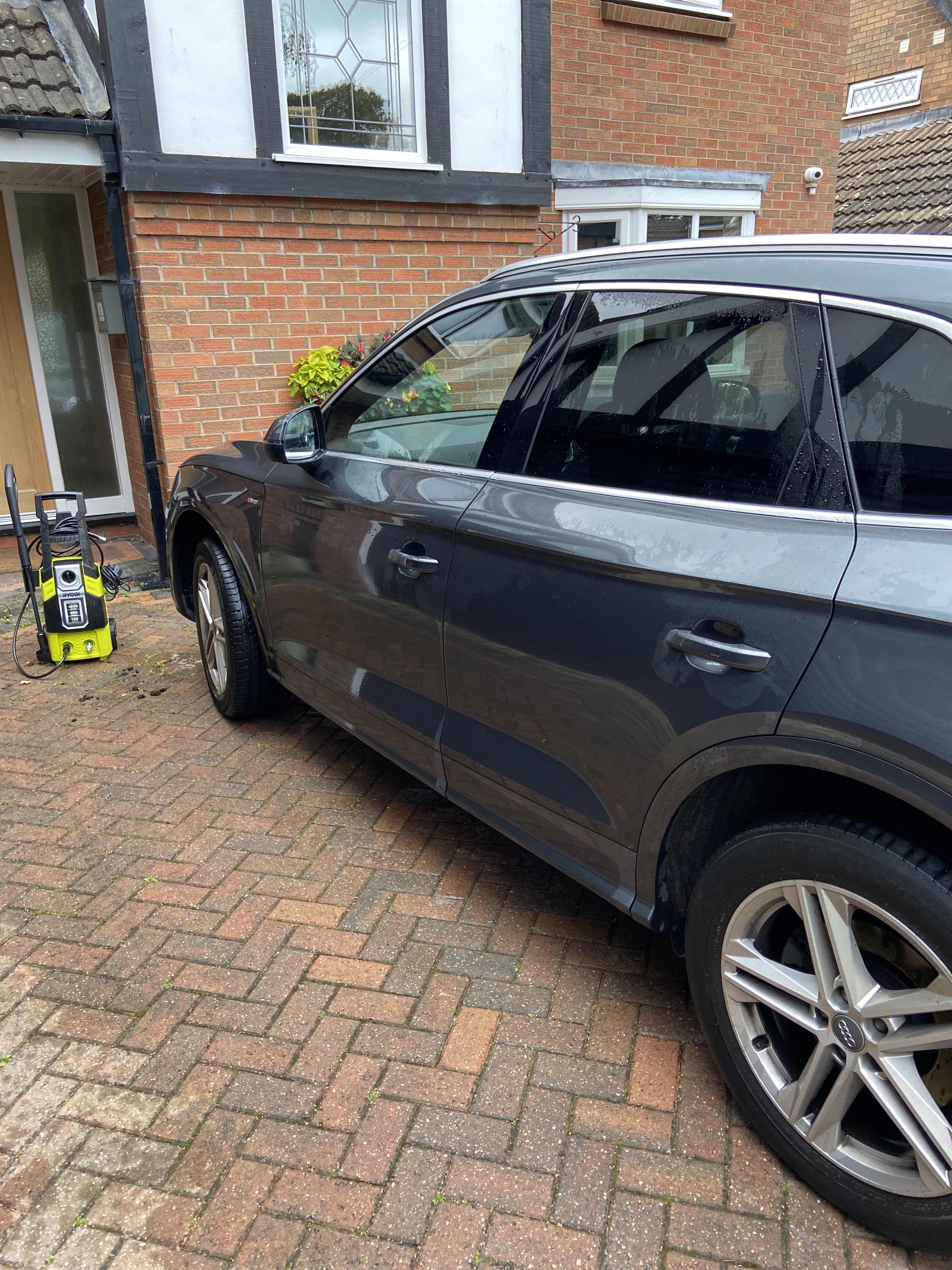
Using the automatic detergent function with the pressure cleaner meant I cleaned my car in 20 minutes
Cleaning other objects
In addition to stonework, glass and vehicles, the Ryobi RPW120B pressure washer instruction manual claims that it can also be used to clean machines, buildings, floors, facades, terraces and concrete walkways. We have recently purchased some family bikes, so I would definitely consider using the Ryobi to hose these down if they got muddy.
Ease of use
As I own a pressure washer and have used other pressure washers in the past, I found the Ryobi RPW120B pressure washer very easy to use. I do think that if you were new to pressure washing, some more written instructions would be helpful, such as what setting to use the pressure washer on for different surfaces.
It’s great that you can vary the pressure and the spray width all using the same lance and the automatic soap dispenser is a great feature which saves you from fiddling around with buckets and sponges, or extra accessories.
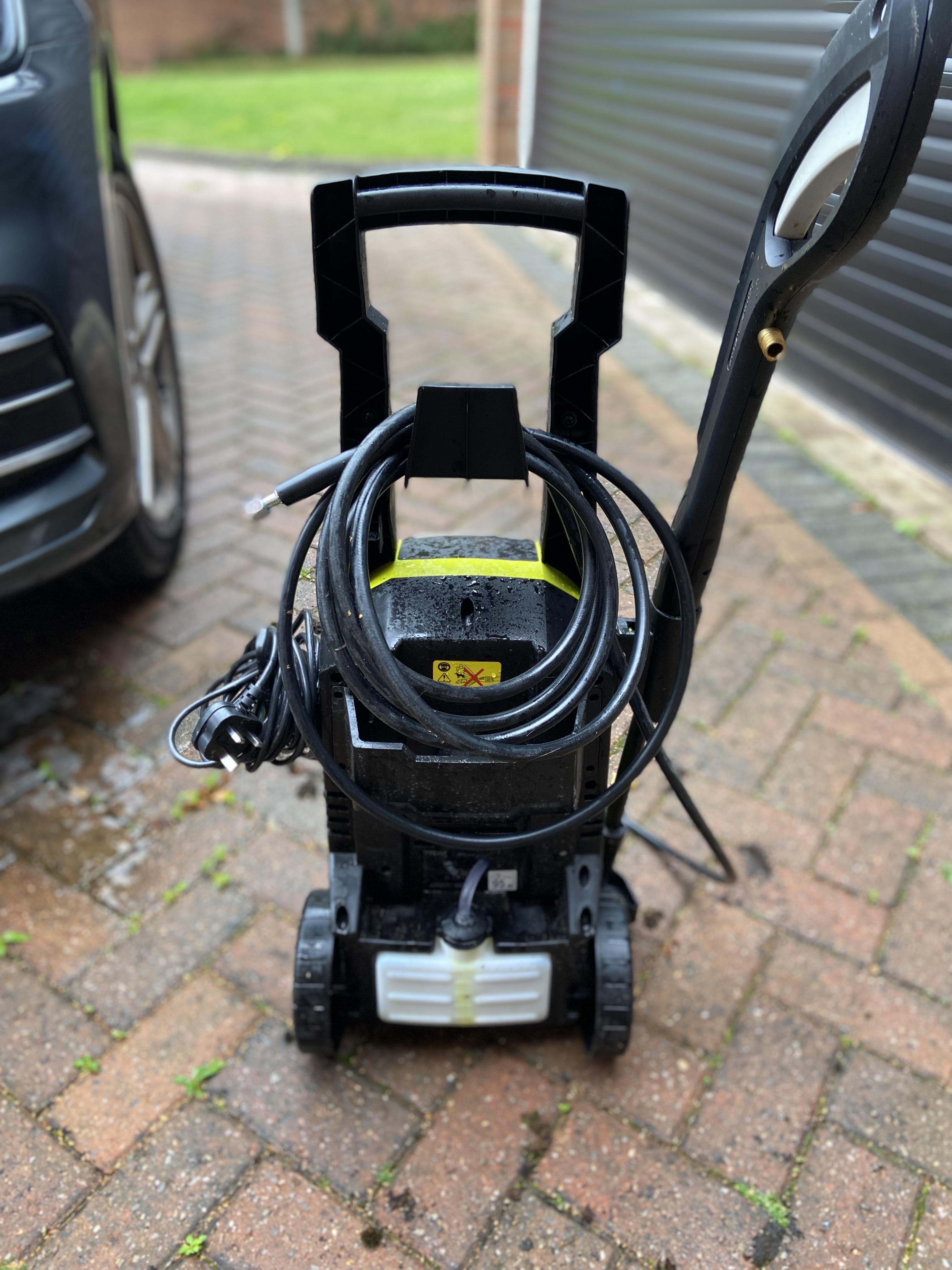
It took a while to tidy the hose away, but the machine does pack away more neatly than some others I have tried, taking up a relatively small footprint
The one thing I did find tricky was when it came to putting the pressure washer away. The instructions give advice on what to do, but when it came to winding in the hose, this was very tricky as I had to twist it and coil it in a certain way as I was wrapping it up. This took me a good five minutes before it was neat enough to place on the integrated hose handle. I found myself wishing it had an integrated hose reel instead. However, once sorted, the hose was packed away more neatly than some other pressure washers I have tried, taking up little space in my garage.
The other aspect that had me stumped was a small metal tool, attached to back of the instructions. Nowhere in the instructions does it explain what this tool is for. It was only after sending a picture of it to my family WhatsApp group, that I got the answer from my sister – a nozzle cleaner. It would have been useful if the instructions included the use of this, as otherwise I might have thrown it away.
Additional features
As well as the integrated hose handle, the Ryobi RPW120B High Pressure Cleaner also has a rack to store the lance and a hook for the power cord, meaning everything can be tidied away and stored neatly, saving room in your shed. It’s also very compact, light and the wheels and handle make transporting it from job to job, a breeze.
The integrated detergent function is another bonus and the 1800W motor, providing 120 bar of maximum water pressure, makes this little machine very powerful.
There are a number of tools you can purchase to complement your cleaning, including a turbo nozzle, spray nozzle, wash brush and surface cleaner. You can also buy a compatible adapter for use with Karcher pressure cleaner accessories, which is mentioned in the instruction booklet. It can seem like a lot of extra stuff to buy to make the pressure washer tackle jobs more easily, but as the unit is a low price point to start with, you can level up without too much outlay.
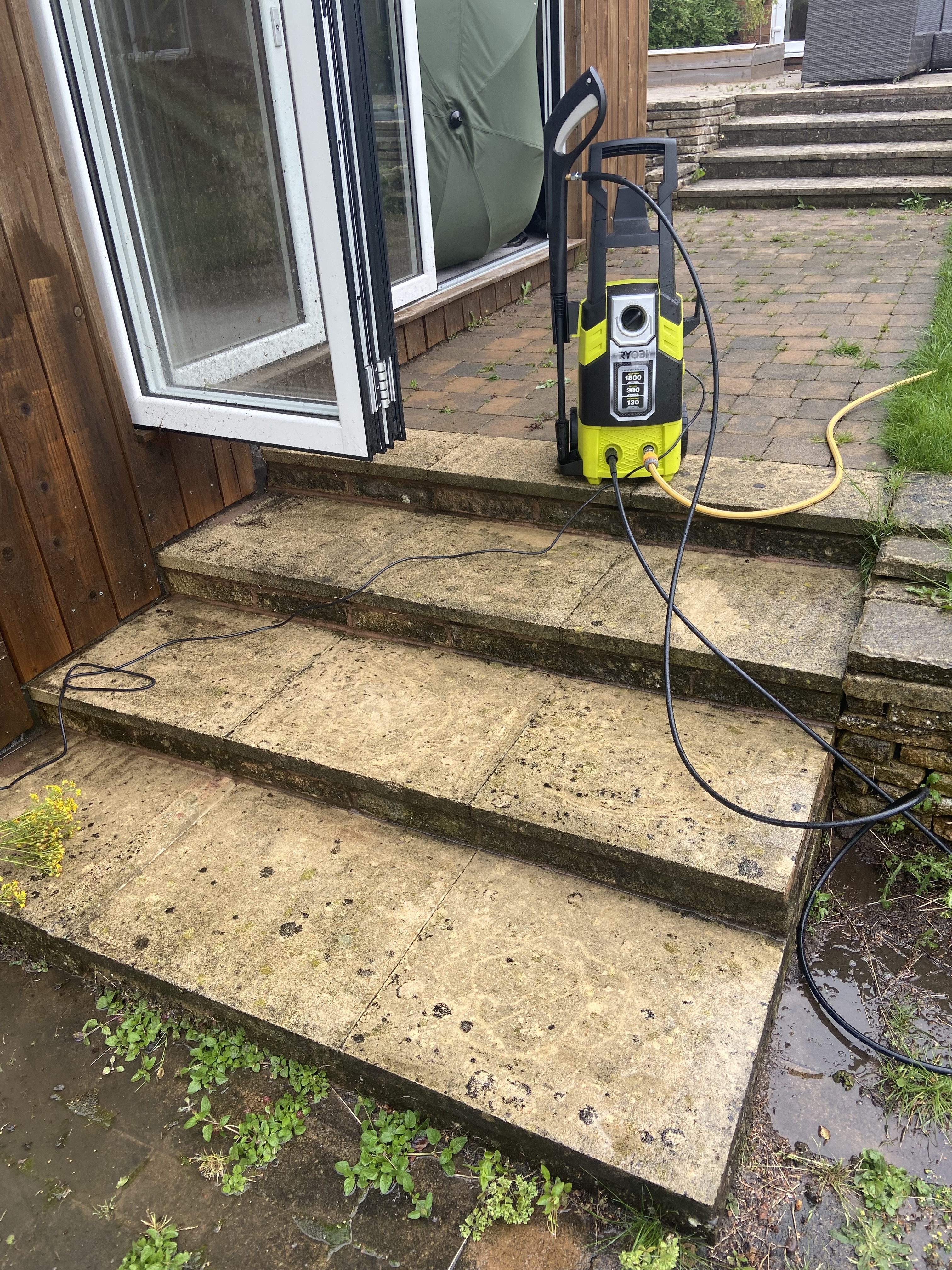
How does the Ryobi RPW120B rate?
I have rated the Ryobi RPW120B High Pressure Cleaner four stars due to how easy it was to assemble and use, plus how effective and powerful it is for the price – it's very good value for money.
Most reviewers agree and rate it four or five stars. They comment on its affordability, how light it is and how powerful it is, with some preferring this machine to the more expensive Karcher models. I actually gave it the same rating at the Karcher K5 Power Control Pressure Washer I reviewed which is over twice the price. The Ryobi doesn't feel as sturdy, but car cleaning and accessories were comparable – though the K5 comes with app-guided cleaning for better results.
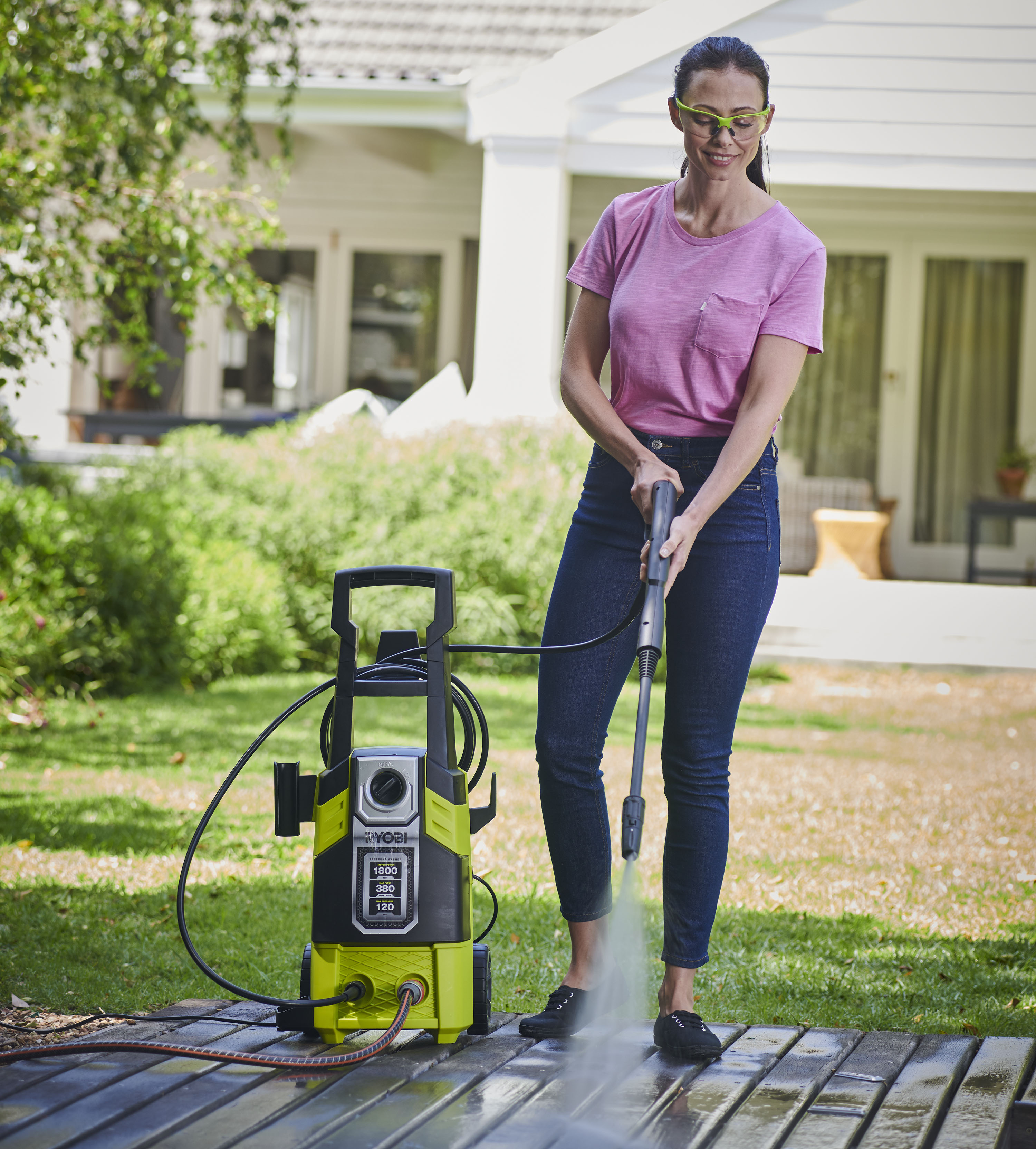
Those who have given the Ryobi RPW120B a low rating have had issues with some of the parts being a bit flimsy and breaking, or have had problems with the machine leaking. A few have also commented that the machine is quite noisy, compared to other pressure washers.
Overall, I would recommend this pressure washer to those who are looking for a small and compact machine, which is effective, but a decent price. It may not be suitable for large stone areas with just what’s in the box, but with the option of purchasing additional accessories, it would be an ideal tool to add to any gardening arsenal.
About this review and our reviewer
Bethan Davis is a PR Officer in the tourism industry. She lives in the West Midlands with her fiancé and two sons. With both under the age of five, she is always looking for ways to keep their family garden neat, safe and tidy with ease, so was happy to give this pressure washer a go. She tested it for a couple of weeks this summer on various garden and outdoor cleaning tasks.
Bethan works in PR for the tourism industry and lives with her fiancé, sons Danny and Finn, and Jasper and Leo the cats. She loves being in the garden, but prefers to spend her time relaxing there rather than gardening, so is always on the lookout for tools that will keep her space looking its best without take up loads of family time.
-
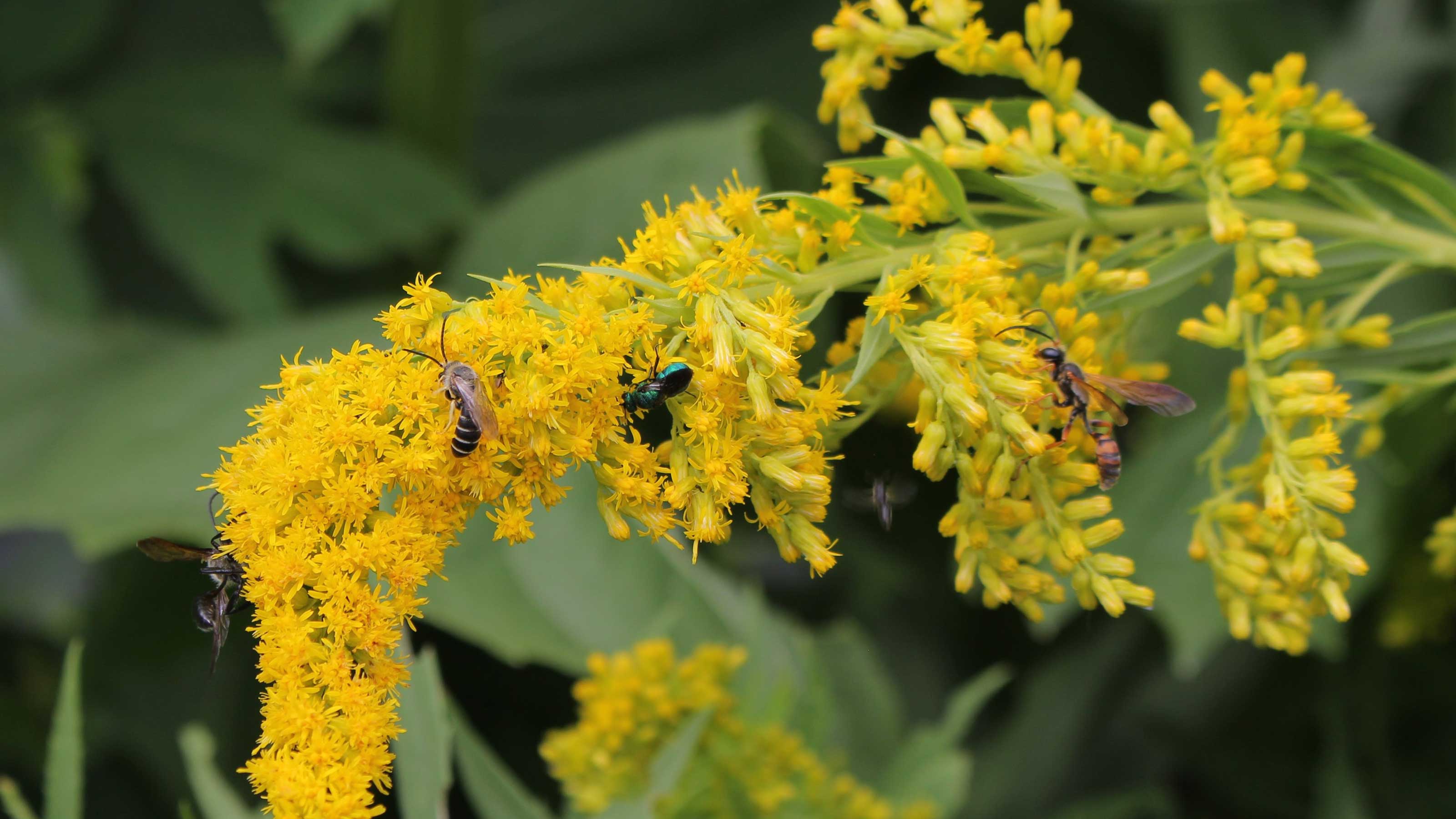 Seaweed compost and green manure are on the menu with this top trend for 2023
Seaweed compost and green manure are on the menu with this top trend for 2023Ideas Gardening experts say the regenerative gardening trend will take sustainability to the max next year
By Jayne Dowle Published
-
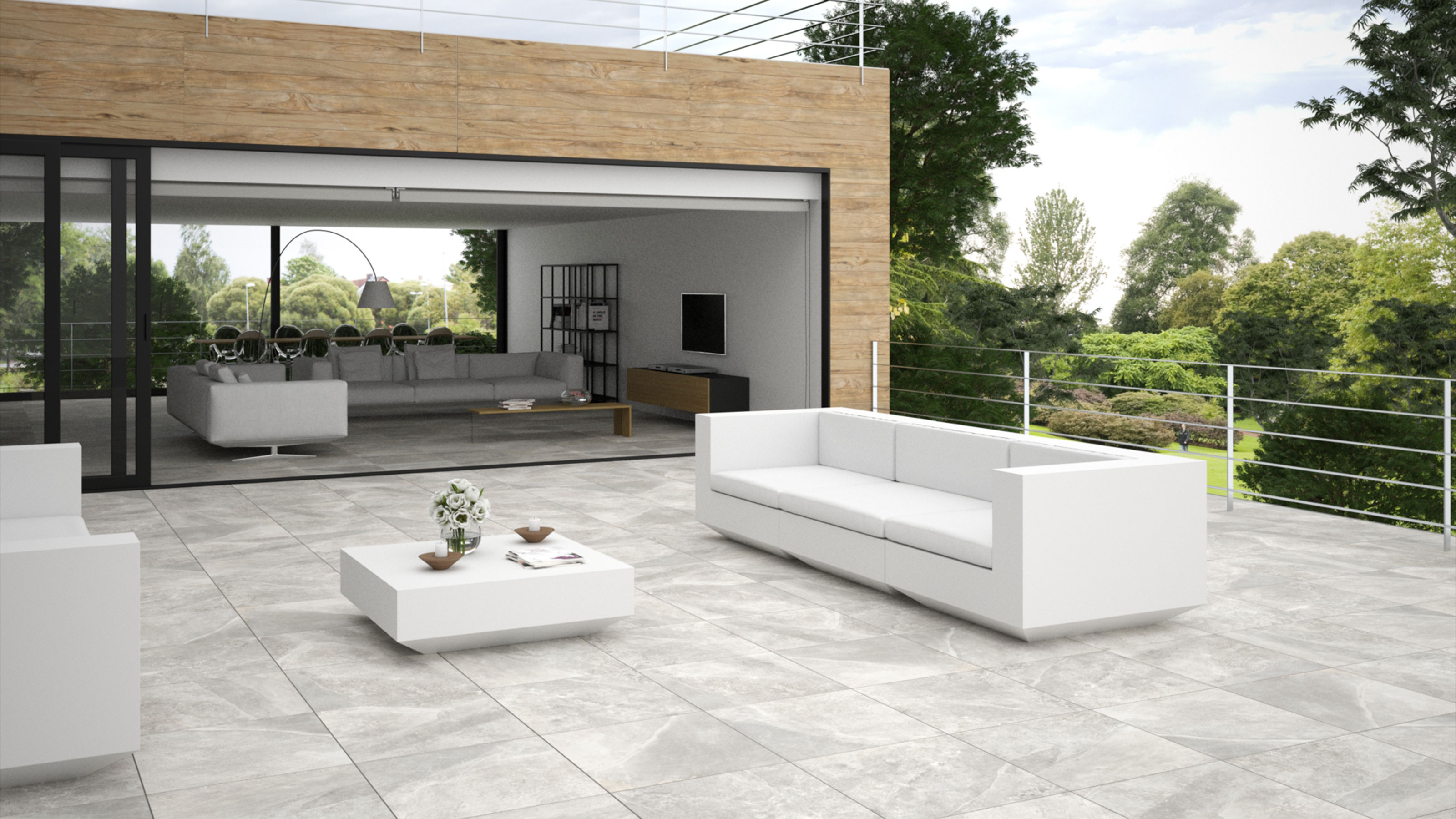 Neglect this backyard cleaning task and you could 'decrease your home's value by 20%' say property experts
Neglect this backyard cleaning task and you could 'decrease your home's value by 20%' say property expertsLandscaping It’s hard to prevent moss and algae forming on your patio at this damp and chilly time of year, but well worth the effort, according to these experts
By Jayne Dowle Published
-
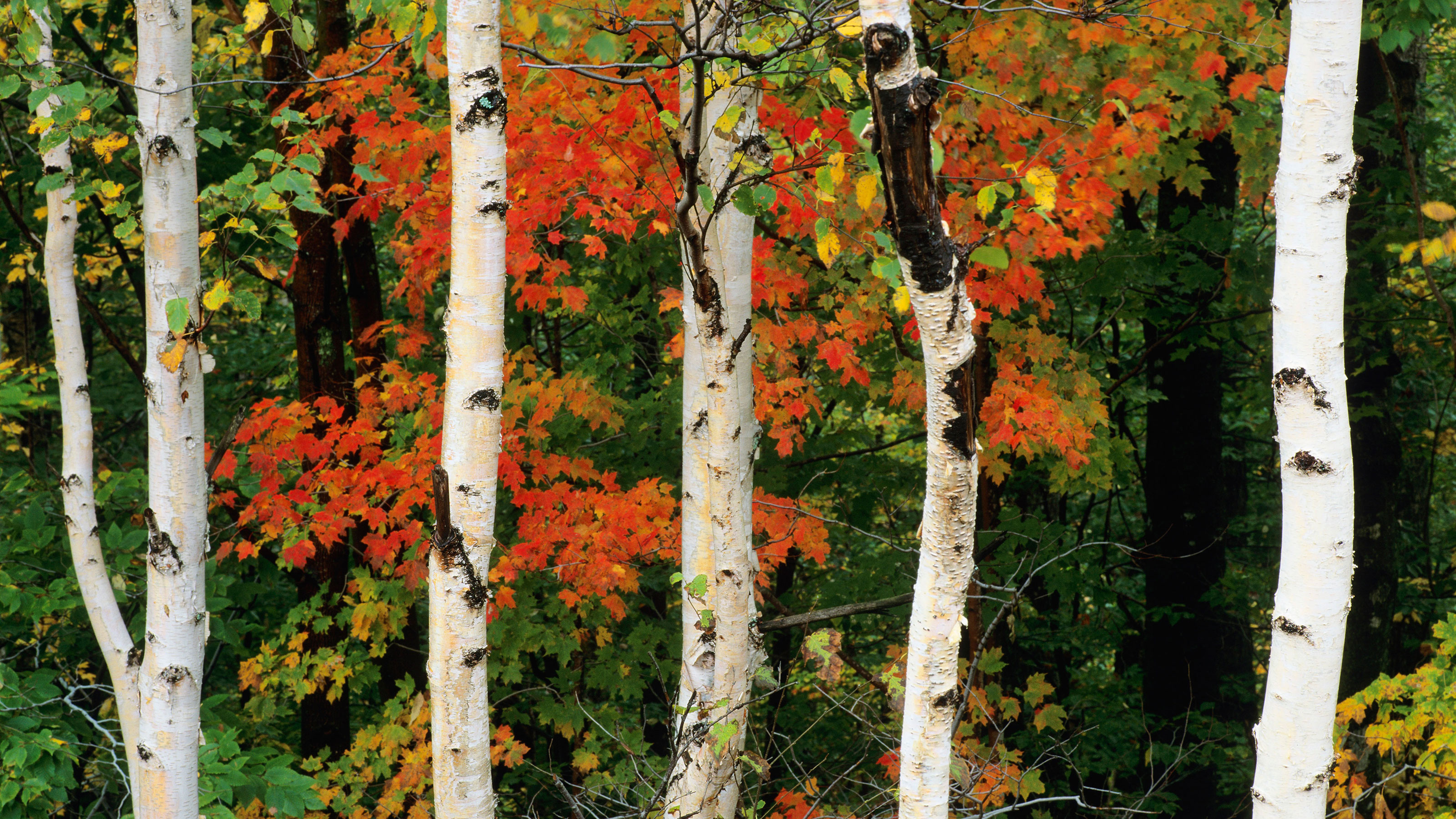 Experts reveal how to make white bark trees gleam this winter
Experts reveal how to make white bark trees gleam this winterPlants It's all down to simple soap and water
By Jayne Dowle Published
